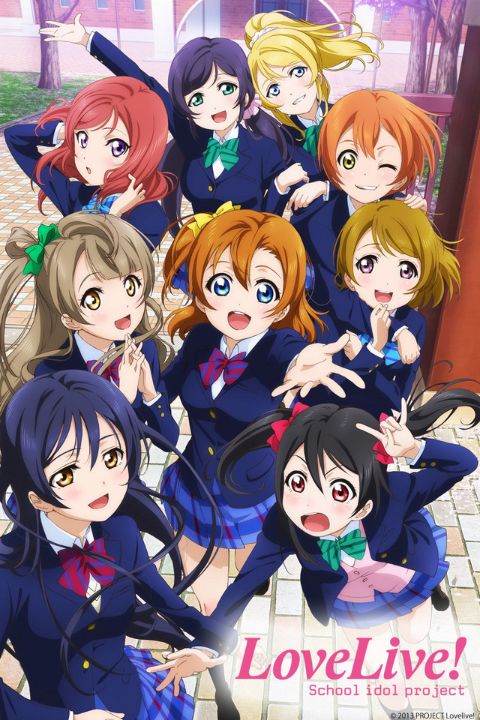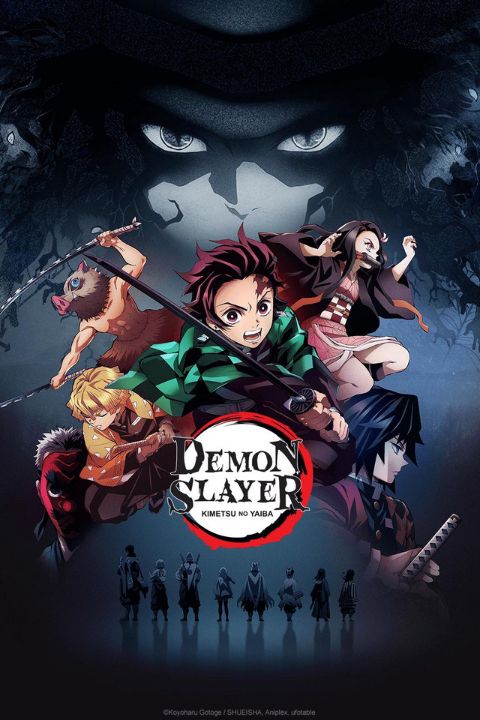Crunchyroll has had a crazy fall and winter so far - they've announced over 30 series will be launching on their platform in Winter 2021, moved Crunchyroll Expo to be a virtual convention, organized the upcoming Anime Awards, and got acquired by Sony for $1.175 billion. Among all of that, they somehow found the time to talk with us about how they approach marketing anime.
Can you start us off with a brief rundown of your responsibilities at Crunchyroll and some of the projects your team is currently responsible for, as well as your personal role in them?

My current title is Director of Community Marketing. I oversee our audience development efforts for the English-speaking audience, using social media, custom video, and the execution of title marketing campaigns as principal tools. Some of our current projects I think are interesting include a video series that asks animators to share their favorite scenes animated by their peers, a marketing plan to super-serve users in specific countries, and our social campaigns around this season’s Crunchyroll Originals. My degree of involvement on each of them varies dramatically from general oversight to spearheading execution, with the majority of my time spent on prioritization, coaching, reporting, and general management duties.
I’ve had quite a few different roles at the company; my appetite for change is a major reason why I’ve lasted with Crunchyroll for over 7 years, which is a long time for any tech or media company. I’ve been a content analyst, a brand manager, an events manager, and, recently, I passed on the torch for the editorial programming department I started up in 2017, which manages on-site programming, Crunchyroll News, and contributes to cross-team efforts on content discovery. With how much the company is growing as the Crunchyroll brand continues to expand into the hearts and minds of anime fans everywhere, I’m sure my role will continue to evolve as well.
How does Crunchyroll decide what shows to focus marketing efforts on each season? Do marketing efforts differ from title to title, with certain genres or subject matters lending themselves better to marketing success?
There’s a combination of factors that play into what kind of marketing plan we roll out for a title, including the obvious like anticipated performance and various business objectives, but thanks to the diverse world of anime, we’ve got an advantage where we can shift the focus in a larger marketing plans to where specific parts of the larger audience may be super-served better.
Marketing efforts are generally pre-defined for titles prior to launch, but there’s some flexibility if we’re seeing unexpected behavior in a show’s performance.
What’s important to mention, though, is that every anime is someone’s favorite, and there’s an expectation (and, in my opinion, a huge benefit) for nearly every series to get some marketing attention. The challenge is that Crunchyroll launches more new series than any major US TV network every year — that’s quite a lot to juggle and just simply ensure they’re being promoted, let alone to develop a thoughtful and holistic strategy for each of them, to say nothing of the immense staffing needs that such an expectation would call for. Some entire teams in our marketing organization are dedicated primarily to the cream of the crop, but I’m grateful my team is able to go deep on critical darlings and hidden gems as well.
As a result, one of my favorite challenges has been finding opportunities for where to market the series that fall below the highest priority. Over the years, we’ve developed heuristics for knowing which marketing levers will best suit each kind of anime — what social media platforms over-index with certain audiences, which shows are best promoted when packaged with other anime in something like a recommendation article — so we’ve found a good mix of standard marketing packages to treat all genres and classes of anime down every level of priority.
There are certain genres and elements that make marketing much easier on certain platforms. Our other peers in the WarnerMedia family experience this as well (this title kills for us on Instagram but can’t get enough love on Facebook), and with the absolute tonnage of anime Crunchyroll promotes every year, it’s easy to pick up on trends and patterns across genres and subgenres. Social engagement doesn’t correlate 1:1 with on-site viewership, so don’t trust your timeline for a sense of what’s the most popular, but understanding these trends is necessary for successful community marketing in the industry.
For example, idol anime tend to get particularly high engagement relative to most other genres, and understanding how, where, why, and the nuances of the subculture can make or break a campaign. But the deepened engagement on a per-user basis makes sense to me from my experiences and observations: if you’re a big idol anime fan, you’re dramatically more likely to share that fandom outwardly than the typical fan of a non-idol anime, to engage in the community — that’s a major element of idol culture, after all!

As a follow-up, are there challenges in marketing something with questionable or sensitive content? How do you and your team handle that?
Certainly, though I think it’s broader than just having to do with questionable or sensitive content, which are broadly disallowed from many traditional marketing channels by the platforms themselves. As I discussed before, to optimize our team’s time and impact, we’re constantly pursuing the optimal mix of marketing levers to pull for each title, based on what kinds of audiences engage best with each genre, style, etc. For sensitive content, our options are certainly more limited, but channels where there’s a degree of previously expressed interest, like serving the title on your Crunchyroll feed if you’ve watched similar titles, can be great solutions.
How far in advance does the marketing team work ahead of a show’s regular simulcasting schedule? How far after the last episode airs do projects continue for?
The work for marketing an upcoming title often begins before the license is even cleared — it’s not uncommon for us to put together a full marketing strategy during early conversations and when we’re involved at the inception of an anime’s production, conversation about positioning, novel strategies, etc. can begin at that point. Most major titles for the last few years have had significant pre-launch planning, if not execution.
What role does marketing play in determining what seasonal shows will be popular? How much impact do you think it has?
It’s a mix — some shows will be popular no matter what, and our marketing efforts seem to “grease the wheels”, and often, we’re able to propel an anime into popularity in the first place.
For the first example, I’m reminded of a time when a peer of mine in the industry who had been following trends in seasonal anime for a decade longer than I have congratulated Crunchyroll on the success of a recent high-profile simulcast, which he attributed to our marketing. He said something along the lines of “Don’t get me wrong, the show’s good and it was going to be popular no matter what. But you made it popular from episode 1, when normally it would’ve taken a month or two to get ‘discovered’ and build an audience.” The result was the show had more engagement during its simulcast period than it otherwise would have - the most pivotal time for marketing.
While predicting the success of an upcoming anime is much more of an art than a science, we’ve seen time and time again that anime will overperform relative to expectations with a solid marketing plan, and the same holds when we shift additional resources to a series mid-season. We don’t necessarily have perfect insights into the performance of titles that Crunchyroll is not able to secure, but looking at a broad array of external metrics, there certainly seems to be a “bump” unique to our series. While these aren’t maxims by any measure and there are more than a few exceptions, the scale of Crunchyroll’s marketing simply isn’t matched, and it’s proven quite effective at introducing millions of fans to their next favorite anime.
What would you consider Crunchyroll’s greatest marketing success? What was the biggest surprise?
I consider Crunchyroll’s greatest marketing success to be the core engine of the team across each division of the marketing organization — the infrastructure we’ve developed to make sure anime fans are able to find series that they truly resonate with.
When you look at Crunchyroll’s social media network, for example, we’re reaching more individual fans with our promos, teasers, and contests every day than the combined Western anime industry was able to reach in a month back when I was first getting into anime, but that’s to say nothing of our fastest growing channels, almost all of which are led by our international teams outside of English-speaking regions, or the other incredibly talented teams within our marketing org that are innovating new techniques every day and winning awards left and right.

Can you tell us about a time when a social marketing campaign had less of an impact than anticipated?
I’m going back in time for this to 2015. When I first took the reins of our social media accounts, it wasn’t my primary responsibility and it felt more like a fun thing I did on top of my “day job”, but I was incredibly curious about the direct impact of our channels. I had seen articles on popular fansites and individual videos from AniTubers make marked bumps in viewership from time to time — even Reddit threads have had impact! — but I wanted to try a more subtle approach.
I decided to make a faux “theme week” for our social channels, where nothing was announced or called attention to, but I posted a lot of one particular mid-low performing title on each of our social channels. By “a lot” I mean “every other post on Facebook” for a week, for example, I went a little crazy! But I was new, and that was OK. I was thrilled to see, at the end of the week, that viewership for the show went up 10-15%, enough to know it wasn’t just noise.
However, viewership for the same title elsewhere went up by more than 30% during the same time period. I was devastated; my efforts were doubly effective off-platform! Now, there are a lot of complicating factors that do make this story not as straightforward as you read here, but I didn’t feel that at the time, that much is true.
When we later called attention to these kinds of theme weeks, we saw marked improvements in viewership. As a brand that so many fans trust, Crunchyroll calling attention to the fact that we’re promoting a title is much more effective, and it ensures that that promotion drives to the intended destination.
How do you respond to and capitalize on shows that see unexpected, organic popularity?
One advantage of hiring staff who are fans in their own right gives us a huge advantage in this regard. It means that very little popularity is unexpected, and even less of it is hard to call 100% “organic”. For the most part, if there are surprises in performance, it’s a matter of degree.
As a result, we’re able to jump on trends much earlier than if we waited on typical SVOD reporting. If a big moment in a show happens, someone is probably watching it already and can synthesize what made it special to the rest of the team before it starts trending. Then, we can react by highlighting moments that fans want to share on social, to compiling reactions in articles, to programming the title on the Crunchyroll homepage, etc.
I want to be clear — hiring fans in general isn’t the end of this strategy: you need people who are able to communicate the “why” and find meaningful ways to celebrate anime that serve both the audience who’s enjoying the show and the larger business goals that are tied to anime promotion.
You’ve been at Crunchyroll for a long time—what are some shifts in the anime viewing audience that you’ve seen? In turn, how has anime marketing evolved and transformed to respond to those shifts? Is there anything you’re excited about on the horizon?
Something that’s not considered by most anime fans today is the exponential growth in the last decade in the English-speaking world. A microcosm of this can be found in Anime Expo’s annual attendance numbers: when I first participated in Anime Expo in 2009, I was one of approximately 44,000. Last year, just a decade later, that number was more than 2.5 times as big. This is the story of almost every anime event in North America, and it’s paltry compared to the growth of the anime fandom overall.
There are an order of magnitude more people on the internet today than when I started watching anime online. Since being on the internet is how the majority of anime has been watched overseas most years in most countries for the last 30 years, this explosion of internet users means that there’s casual access to anime — no longer do you need to drive 100 miles with a VHS player and blank tapes to a club or meetup with dreams of daisy-chains in your head.
As a result, the anime audience has become increasingly broad. Niche titles can now reach a critical mass of fans, and “mainstream” anime can truly reach the mainstream, as we’ve seen with the likes of Demon Slayer: Kimetsu no Yaiba.

However, at the same time, the diversity means that there’s much fewer shared anime experiences. In the same way that the move from 3 channels to 500 on cable led the way to stratification of audiences across the US media landscape, so has the fact that anime is popular enough now that nearly every anime gets a wide release in English timed with its Japanese broadcast. No longer are the days of Toonami or SyFy serving as tastemaker, or only the best series getting high-quality fansubs. Cowboy Bebop was required watching 20 years ago, and now, the percentage of anime fans who have taken the time to visit this classic would probably shock the average fan my age.
Anime is a medium, not a genre, and that’s caused profound distinctions in what it means to be an “anime fan” by different groups, both of whom may consume the same amount of content and identity just as deeply, but have little to no overlap in what they’re watching. I can’t tell you how frequently I see assertions on an anime’s popularity based, from what I can tell, entirely on the self-selected bubble of the individual’s Twitter timeline.
As a result, our marketing has to reach incredible diverse audiences with markedly different tastes. Like discussed before, there are certain ways to make this work — different cohorts over-index on different platforms and react differently to each marketing lever we can pull.
That said, I’m quite excited for the future, because even as a grumpy old anime fan I’ve found an exceptional amount of great series to watch every year, and the scale of the fandom has allowed for so many types of shows to be made that there’s always going to be something for nearly everybody every season. With more fans overseas supporting anime than ever before, that trend doesn’t seem like it will slow down any time soon.
Is there anything you’d like to add that we didn’t ask about or cover in our questions?
I went a little longer than I anticipated elsewhere, I think I covered a reasonable amount here :)
We have to ask a fan-favorite question. What is one Japanese Whiskey everyone should try?

Nikka Coffey Grain Whisky — it’s (relatively) affordable and comparatively easy to find for a Japanese beverage overseas. The vanilla and caramel flavors are not too unfamiliar for bourbon drinkers, but they’re expressed more boldly here, and without the cloying sweetness of too many Kentucky varieties.
Fansubbing would again like to thank Crunchyroll and Miles for taking the time to talk with us. You can follow Miles on Twitter at @Real_Kilometers
Questions or comments? Tweet us at @fansubbing! You can also follow us for updates on the latest articles, too.

